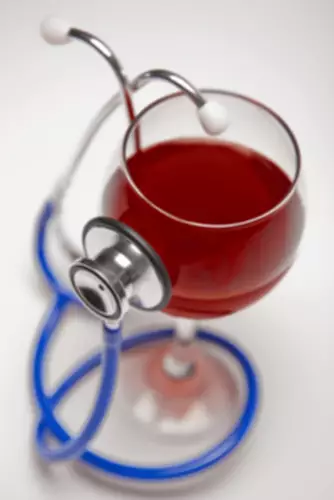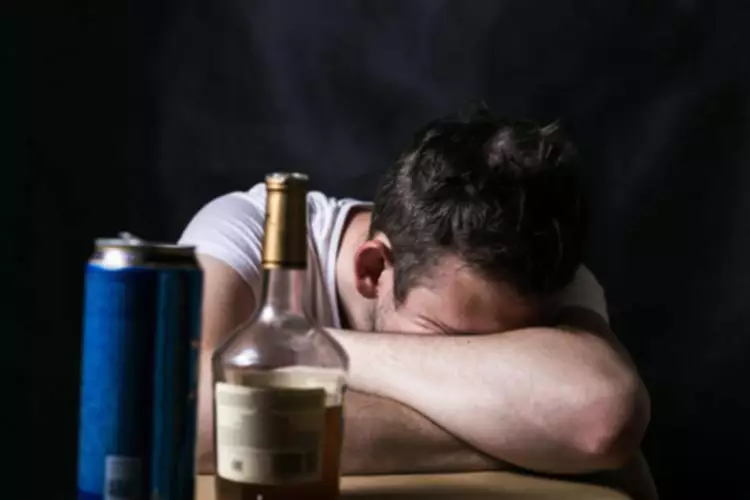
It’s estimated that 40 million Americans suffer from some kind of anxiety disorder at any given time. “The more alcohol someone drinks, the more there’s a physiological effect where it actually, paradoxically, increases anxiety levels.” While it may provide momentary relief, in the long-term alcohol makes anxiety worse by disrupting chemicals and processes in the brain. Talk to your doctor about alcohol consumption before taking any of these medications, as side effects can be harmful or fatal. “Often they don’t realize that alcohol disrupts sleep architecture, causing them to spend less time in deep sleep and to have more fragmented sleep.” This can be especially problematic as people get older, given that insomnia and other sleep disturbances become more common with advancing age.
- People with underlying mental health conditions, like depression and anxiety disorders, are more likely to experience anxiety after drinking, Dr. Schacht adds.13 “These issues can essentially shift your brain’s ‘set point’ and make it easier for alcohol to ‘tip’ the brain into anxiety,” he explains.
- According to AA, 27% of approximately 6,000 members were sober for less than 1 year, and 22% were sober for 20 plus years.
- A recent report from the Collaborative Study on the Genetics of Alcoholism (COGA) focused on 591 personally interviewed relatives of alcohol-dependent men and women (Schuckit et al. 1995).
- Hangxiety is a term that describes hangover anxiety, an experience of anxiousness that occurs after you’ve been drinking alcohol.
Do manage the physical symptoms

Beginning in the 1990s, stress-related alcohol research evolved from its roots in tension-reduction research to become a multifaceted subspecialty focused primarily on the psychophysiological and neurobiological correlates of the stress response, stress regulation, and alcohol misuse. Increasingly, this research includes examination of the long-term genetic and environmental influences on stress reactivity and regulation and their connections to the development of AUD vulnerability. can drinking alcohol cause panic attacks According to a review study that looked at anxiety and alcohol use disorders, this relationship can become a dangerous, self-perpetuating cycle. However, over time or in excess amounts, drinking alcohol can lead to increased levels of anxiety and stress. If a person experiences alcohol withdrawal symptoms, it can create a cycle of heightened anxiety and increased alcohol misuse. The initial symptoms of anxiety and panic may be related to alcohol withdrawal.
- The parallel-treatment approach requires that specific treatments for both disorders are delivered simultaneously, although not necessarily by the same provider or even in the same facility.
- Other people who don’t have anxiety disorders find that they feel more anxious after they imbibe.
- These psychological conditions are often intense enough to interfere with life functioning, and the symptoms are often recognized by physicians and other health care providers as serious enough to require treatment.
- This can definitely cause anxiety and worsen any existing phobias or overthinking tendencies you may already have.
- It is important to remember, however, that certain studies show some overlap among depressive, anxiety, and alcoholic disorders in the same family.
- Adult women on the whole drink less alcohol than men and have lower rates of alcohol-related disease and death.
- And depression is affected by alcohol too – find out more on our alcohol and depression webpage.
Alcohol Dependence and Depression
However, it generally is accepted in the comorbidity literature that this approach is not advisable (e.g., Kushner et al. 2007; Lingford-Hughes et al. 2002; Stewart and Conrod 2008). Recommendations to treat both anxiety and AUDs therefore appear warranted on both theoretical and empirical grounds. The literature for treating dual problem specifies three primary approaches, including the sequential, parallel, and integrated models (for a comparison, see table 3). Prospective relative risk avoids problems related to retrospectively examining the order of onset.
- These different models are not necessarily irreconcilable when considering the pathodevelopmental trajectory of addiction.
- The self-medication explanation for the comorbidity of anxiety and AUDs has received the most attention in the clinical and research literature.
- This phenomenon is often referred to as “hangxiety,” and can last from a few hours to a few days after consuming alcohol.
- Alcohol compromises sleep quality and causes sleep disruption, which again disrupts brain chemistry.
Treating Addiction To Alcoholism And Anxiety

At present, SSRIs (e.g., fluoxetine, paroxetine, and sertraline) and SNRIs (e.g., venlafaxine and duloxetine) generally are used as first-line treatment in this area because they consistently demonstrate anxiolytic efficacy, including in patients with comorbid AUDs. For example, a direct examination of the efficacy https://ecosoberhouse.com/article/alcohol-intolerance-symptoms-and-causes/ of paroxetine in this population showed that it reduced social anxiety relative to placebo (Book et al. 2008), providing an empirical foundation for its use in these patients. Moreover, serotonergic agents have favorable properties, such as being well-tolerated and having virtually no abuse potential.

For example, an evaluation of 1,047 adult relatives of 193 subjects with severe anxiety disorders revealed no increased risk of alcoholism among the relatives, with the exception of the relatives of those patients who had exceptionally early onsets of their psychiatric disorders (Goldstein et al. 1994). Nor did a review of several recent studies by Fyer and colleagues1 and Noyes and colleagues1 reveal high rates of alcoholism in relatives of people with social phobia or other anxiety disorders (Schuckit and Hesselbrock 1994). In addition to adjusting standard pharmacotherapy and psychotherapy protocols for anxiety and AUDs when treating comorbid clients, it also is crucial to apply these methods in a way that produces the best outcomes for both disorders. Case conceptualizations that implicate one disorder as primary (e.g., because the patient histories are consistent with either the self-medication or the substance-induced models of comorbidity development) may tempt clinicians to focus treatment solely on that primary disorder.
Research shows that people with alcoholism find it difficult to recover from traumatic events. This is possibly because of the effects of alcohol abuse, which can actually change brain activity. The sense of relaxation you feel when you drink can often be attributed to your blood alcohol content (BAC).
Pharmacotherapy for Anxiety Disorders
- Many individuals will use alcohol as an unhealthy coping tool to reduce symptoms of anxiety.
- But reaching for caffeine may not be the best idea as its stimulant effects could exasperate your feelings of anxiety.
- Those with AUD may suffer from alcohol withdrawal, which includes physical symptoms of anxiety, such as rapid heartbeat, nausea, and shaking.
- To shed light on the potential role of social anxiety in addiction treatment, Book and colleagues (2009) compared participants in an intensive outpatient program with high and low social anxiety on attitudes toward treatment activities.
- As this is happening, it can affect your central nervous system and cause you to feel jittery or anxious.
- Another study with 171 male veterans demonstrated that self-reported measures of temporary anxiety (i.e., state anxiety) decreased rapidly during inpatient alcohol treatment (Brown et al. 1991).
